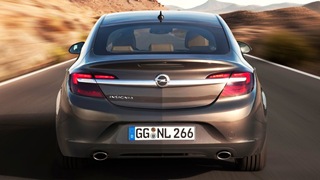 Most industrial management rules classify the manufacturing methods according to several characteristics of the intended products. One of them states that investing on automation and standardization is more convenient for high-volume items, which are usually cheaper, while the more expensive should give much bigger importance to the customizing. While such divisions seem to work for lots of companies around the world, GM’s decades of practice with global operations have managed to prosper by doing the opposite.
Most industrial management rules classify the manufacturing methods according to several characteristics of the intended products. One of them states that investing on automation and standardization is more convenient for high-volume items, which are usually cheaper, while the more expensive should give much bigger importance to the customizing. While such divisions seem to work for lots of companies around the world, GM’s decades of practice with global operations have managed to prosper by doing the opposite.
This blog has mentioned that experience a couple of times. GM has had all sorts of results with vehicles sold in several countries, and it’s undeniable that they’ve made enormous influences on the other international automakers’ strategies. What has been accepted in the latest years is to make regional projects for the cheaper categories and global ones for the upscale segments. The first strategy needs to satisfy each public while keeping the prices to a mininum, which can demand different measures according to considering what each country’s plants already has or can have. The second will always look for offering not only the best car of its class but also a respectable image, enough to make a potential client want to take this car instead of any other. Creating vehicles that meet so many countries’ standards and tastes at the same time certainly helps achieving this goal, but also makes each project very expensive to develop. And this is the precise reason why many automakers are investing on centralizing their expensive vehicles into few projects: since it’s known they’ll be accepted almost everywhere just like they are, they’re actually being offered everywhere just like they are. That’s why GM offers Insignia in both Europe and North-America mostly with naming changes.
 The European version features very discreet updates on the outside, like more aerodynamic bumper and new internal redesign on the front and an extension of the tail lights over the trunk lid on the rear. The biggest changes were made in the cabin, which replaces the old central console’s buttons in favor of an 8” touchscreen, following the current trend of offering a complete infotainment system with downloadable apps. The dashboard was also renewed, receiving three instruments with the central one allowing the driver to choose between analogue and digital speedometer, smartphone operations or navigation directions. The steering wheel received sportier design and simpler button system. And there will be new trim levels and leather packages, also. When it comes to the powertrain, GM returned the turbodiesel 2.0L in three levels: 118 hp/236 lb-ft, 138 hp/273 lb-ft (76.3 mpg and 99 g/km for both) and 161 hp/280 lb-ft (65.7 mpg and 114 g/km). Using gas, the 2.0L now generates 247 hp and 295 lb-ft and can be upgraded with all-wheel-drive; there’s also a new turbocharged 1.6L, with 168 hp and 206 lb-ft. Both options feature start/stop system and six-speed gearbox both as manual or automatic. Those changes were joined by minor structural updates in order to improve the comfort.
The European version features very discreet updates on the outside, like more aerodynamic bumper and new internal redesign on the front and an extension of the tail lights over the trunk lid on the rear. The biggest changes were made in the cabin, which replaces the old central console’s buttons in favor of an 8” touchscreen, following the current trend of offering a complete infotainment system with downloadable apps. The dashboard was also renewed, receiving three instruments with the central one allowing the driver to choose between analogue and digital speedometer, smartphone operations or navigation directions. The steering wheel received sportier design and simpler button system. And there will be new trim levels and leather packages, also. When it comes to the powertrain, GM returned the turbodiesel 2.0L in three levels: 118 hp/236 lb-ft, 138 hp/273 lb-ft (76.3 mpg and 99 g/km for both) and 161 hp/280 lb-ft (65.7 mpg and 114 g/km). Using gas, the 2.0L now generates 247 hp and 295 lb-ft and can be upgraded with all-wheel-drive; there’s also a new turbocharged 1.6L, with 168 hp and 206 lb-ft. Both options feature start/stop system and six-speed gearbox both as manual or automatic. Those changes were joined by minor structural updates in order to improve the comfort.











